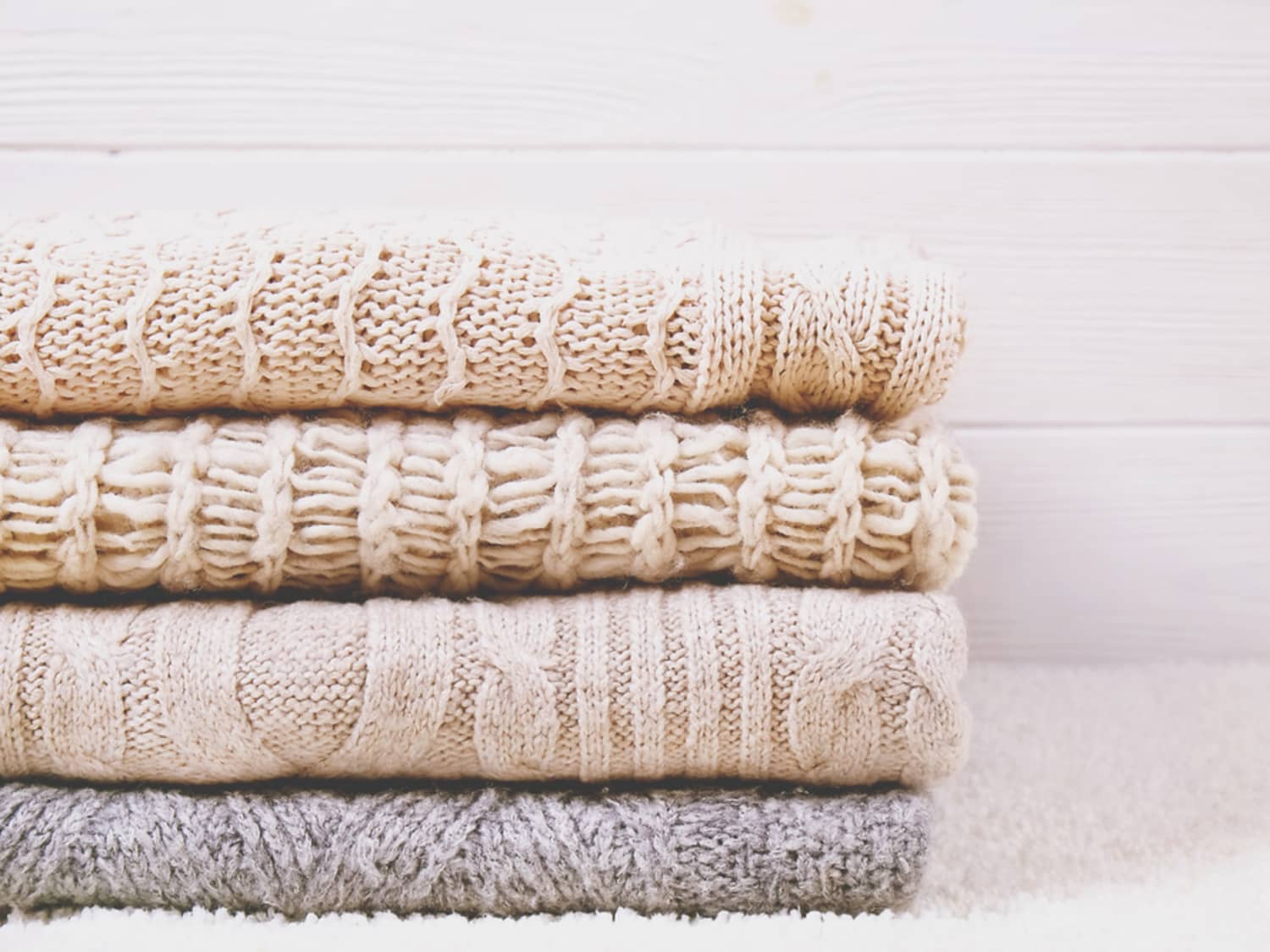

Articles
How To Store Knit Sweaters
Modified: January 7, 2024
Learn the best techniques for storing knit sweaters in this comprehensive collection of articles. Keep your sweaters looking great and ready to wear!
(Many of the links in this article redirect to a specific reviewed product. Your purchase of these products through affiliate links helps to generate commission for Storables.com, at no extra cost. Learn more)
Introduction
Knit sweaters are a beloved staple in many wardrobes, offering cozy comfort and timeless style. Whether you have a collection of hand-knit treasures or luxurious cashmere pieces, proper storage is essential to keep them looking their best and prolong their lifespan.
In this article, we will guide you through the process of storing knit sweaters to ensure that they remain in pristine condition. From choosing the right storage method to preparing your sweaters for storage, we will cover all the necessary steps to keep your favorite knits looking fabulous season after season.
Proper storage not only helps maintain the shape and appearance of your knit sweaters but also helps protect them from moths, dust, and other potential damaging factors. With a little care and attention, you can safeguard your investment and enjoy your cozy garments for years to come.
So, let’s dive into the world of knit sweater storage and discover the best practices to keep your garments safe and well-preserved.
Key Takeaways:
- Proper storage of knit sweaters is crucial for preserving their quality and longevity. Choose the right storage method, prepare sweaters carefully, and consider folding or hanging options to maintain their shape and appearance.
- Incorporating natural deterrents like cedar or lavender can provide added protection against pests while adding a pleasant aroma to stored knit sweaters. Choose breathable storage containers, monitor temperature and humidity levels, and rotate sweaters to ensure long-term preservation.
Read more: How To Store Sweaters
Choosing the Right Storage Method
Before diving into the specifics of storing knit sweaters, it’s important to consider the various storage options available. The right storage method will depend on factors such as available space, the number of sweaters you have, and your personal preferences.
Here are a few common storage methods for knit sweaters:
- Drawer Storage: If you have ample drawer space, this can be an ideal option. Folded sweaters can be neatly stacked in drawers, keeping them protected from dust and light exposure.
- Garment Bags: Garment bags are an excellent choice for storing knit sweaters, especially if you want to hang them. These bags provide added protection against dust and potential snagging or damage.
- Boxes or Bins: Storing sweaters in boxes or bins can be a space-saving solution, particularly if you have limited drawer or closet space. Make sure to choose breathable containers and avoid packing them too tightly to prevent unnecessary creasing.
Consider your specific needs and the available storage options in your home. Assess the storage space and choose the method that suits your sweaters best.
Once you’ve decided on the storage method, it’s important to prepare your sweaters before placing them into storage. This will help ensure that they remain fresh, clean, and protected throughout their time in storage. Let’s explore the necessary steps for preparing your sweaters.
Preparing Your Sweaters for Storage
Before storing your knit sweaters, it’s crucial to take a few steps to prepare them properly. By following these guidelines, you can prevent any potential damage and keep your sweaters in optimal condition.
Here are the essential steps for preparing your sweaters for storage:
- Clean your sweaters: Before storing your sweaters, make sure they are clean. Follow the care instructions on the garment’s label and wash or dry clean them accordingly. This helps remove any dirt, oils, or stains that can attract insects or cause discoloration over time.
- Remove any pests: Inspect your sweaters carefully for any signs of pests, such as moths or larvae. If you spot any, take immediate action to remove them. You can gently shake or brush the sweaters to dislodge any pests or eggs.
- Repair any damages: Before storage, mend any loose threads, holes, or snags. This ensures that the damage does not worsen during storage and helps maintain the integrity of the sweater.
- Avoid using excessive fragrances: While it may be tempting to add scented sachets or cedar blocks to your storage space, be cautious with strong fragrances. Some scents may transfer onto your sweaters, altering their natural scent or causing allergic reactions for those with sensitivities.
- Keep items separate: Do not store your knit sweaters with items that have zippers, hooks, or sharp edges. These can potentially snag or damage the delicate knitting. If you want to store different items together, use breathable fabric bags or separate compartments within a storage container.
By taking these preparation steps, you can ensure that your sweaters are clean, pest-free, and free from any potential damages before entering storage. Now, let’s discuss the options for storing your knit sweaters, whether by folding or hanging.
Folding vs. Hanging Knit Sweaters
When it comes to storing knit sweaters, one common dilemma is whether to fold them or hang them. The decision depends on various factors, including the weight and structure of the sweater, available storage space, and personal preference.
Here’s a breakdown of the pros and cons of folding and hanging knit sweaters:
- Folding: Folding is a popular choice for storing knit sweaters, as it helps maintain their shape and prevents stretching. It is suitable for thicker, bulkier sweaters that can hold their form when folded. However, avoid folding sweaters with delicate or loosely knitted fabrics, as they may lose their shape over time.
- Hanging: Hanging knit sweaters is an option for those who prefer to minimize wrinkles and creases. Lightweight sweaters and those with tighter knitting can be hung on padded hangers to maintain their shape. However, avoid using regular hangers, as they can cause indentation marks on the shoulders. Hanging is particularly beneficial for longer cardigans or duster-style sweaters.
Regardless of your choice, there are essential guidelines to follow for both folding and hanging:
- Folded sweaters:
- Always fold your sweaters neatly to prevent unnecessary creasing or wrinkling.
- Use acid-free tissue paper to protect the sweater fabric and prevent any color transfer.
- Store folded sweaters in a drawer or a breathable container, ensuring they are stacked evenly to prevent excessive pressure on the bottom items.
- Hung sweaters:
- Choose padded hangers to prevent stretching and distortion of the shoulders.
- Use garment covers or muslin cloth to protect sweaters from dust. Avoid using plastic covers, as they can trap moisture and promote mildew growth.
- Ensure that the sweaters are not too tightly packed in the closet to allow for air circulation.
Ultimately, the decision between folding and hanging your knit sweaters depends on their specific characteristics and your personal preferences. Whichever method you choose, remember to handle your sweaters with care to maintain their quality during storage.
Now, let’s explore the different storage options for folding knit sweaters.
Storing Knit Sweaters in Drawers or Bins
If you have ample drawer or bin space, storing your knit sweaters in this manner can be a great option. It keeps your sweaters organized, protected, and easily accessible. Here are some steps to follow when storing knit sweaters in drawers or bins:
- Clean and prepare: Before storage, ensure that your sweaters are clean and free from any pests. Follow the steps mentioned earlier to clean and repair your sweaters, allowing them to be in the best possible condition before storage.
- Fold carefully: Neatly fold each sweater to prevent excessive creasing or wrinkling. Lay the sweater flat on a clean surface and fold it in half vertically, bringing the sleeves together. Then, fold it in half horizontally, tucking the neck and bottom hem under to create a compact shape.
- Use dividers: If using a drawer, consider using dividers or organizers to separate different sweaters and prevent them from getting jumbled together. This ensures easy access and minimizes the risk of stretching or snagging.
- Stack evenly: In both drawers and bins, stack the folded sweaters evenly to distribute the weight. Avoid placing excessive pressure on the sweaters at the bottom, as it can lead to stretching or distortion over time.
- Choose breathable containers: If you opt for storing sweaters in bins, make sure to choose breathable containers that allow air circulation. This helps prevent humidity buildup and allows the sweaters to breathe, reducing the risk of musty odors or mildew.
By following these steps, you can effectively store your knit sweaters in drawers or bins. This method keeps them organized, protected from dust, and easily accessible. Remember to periodically check on your sweaters to ensure they remain in good condition and make any necessary adjustments to the storage arrangement.
Now, let’s explore another option for storing knit sweaters: using garment bags.
To store knit sweaters, fold them instead of hanging to prevent stretching. Store in a cool, dry place to avoid moisture and potential mildew. Avoid using plastic bags, as they can trap moisture.
Read more: How To Store A Cashmere Sweater
Storing Knit Sweaters in Garment Bags
Using garment bags to store knit sweaters is an excellent option, especially if you prefer hanging your sweaters or want extra protection against dust and potential snags. Here’s how to properly store knit sweaters in garment bags:
- Clean and prepare: Ensure that your sweaters are clean and free from any pests before placing them in garment bags. Follow the cleaning and preparation steps mentioned earlier to ensure your sweaters are in top condition.
- Choose the right bags: Opt for garment bags made of breathable fabric, such as cotton or canvas. Avoid using plastic bags, as they can trap moisture and potentially damage the sweaters.
- Use padded hangers: Place your folded or hung sweaters on padded hangers to prevent shoulder indentation and stretching. This helps maintain their shape and minimizes any potential damage.
- Protect with covers: If you choose to hang your sweaters, use garment covers or muslin cloth to protect them from dust. These covers should be breathable to allow for proper air circulation.
- Avoid overcrowding: Be mindful not to overcrowd the garment bags, as this can lead to wrinkles and distortion of the sweaters. Leave enough space between each garment for proper airflow.
- Store in a cool, dry place: Hang the garment bags in a cool, dry area away from direct sunlight. Extreme temperatures and humidity can potentially cause damage to the knit fabric.
Storing your knit sweaters in garment bags offers added protection against dust, pests, and potential snags. It also helps to keep your sweaters in an organized manner, making it easy to locate and access them when needed.
Remember to periodically check on your sweaters, especially if they are hanging, to ensure they are properly stored and adjust any hangers or covers if necessary.
Now, let’s explore some additional tips for added protection when storing knit sweaters.
Using Cedar or Lavender for Added Protection
When it comes to storing knit sweaters, an additional layer of protection can be achieved by using natural deterrents such as cedar or lavender. These options not only help repel pests but also add a pleasant aroma to your stored garments. Here’s how you can incorporate cedar or lavender into your sweater storage:
- Cedar: Cedar is a natural insect repellent and can help protect your knit sweaters from moths and other pests. You can use cedar in a few different ways:
- Use cedar balls or chips: Place cedar balls or chips in your storage containers, drawers, or garment bags. The natural scent of cedar acts as a deterrent to pests, keeping them away from your sweaters.
- Hang cedar sachets: Tie or hang cedar sachets inside your storage area or on hangers. This provides a pleasant cedar scent while also deterring pests.
- Invest in cedar-lined storage: If you have the means, consider investing in cedar-lined storage options, such as drawers or closets. The natural aromatic oils in cedar act as a long-term deterrent against pests.
- Lavender: Lavender is another fragrant option that can help protect your knit sweaters while adding a calming aroma.
- Use lavender sachets: Place lavender sachets in your storage containers or garment bags to provide a pleasing scent. Lavender is also believed to repel moths and other insects.
- Add lavender essential oil: Add a few drops of lavender essential oil to cotton balls or fabric and place them near your stored sweaters. This will release the soothing scent of lavender while serving as a natural pest deterrent.
Remember to choose high-quality cedar or lavender products or source them from reputable suppliers. Additionally, be mindful of any potential allergies or sensitivities to these fragrances. If you or someone in your household is sensitive to strong scents, it’s best to opt for fragrance-free storage methods.
By incorporating cedar or lavender into your sweater storage, you can enjoy the added benefits of insect repellent and a pleasant fragrance while keeping your knits safe and protected.
Now, let’s explore some tips for long-term storage of knit sweaters.
Tips for Storing Knit Sweaters Long-Term
Long-term storage of knit sweaters requires careful consideration to ensure their preservation and longevity. By following these tips, you can maintain the quality and appearance of your knit sweaters over an extended period:
- Keep the storage area clean: Ensure that the storage area for your sweaters is clean, dry, and free from any potential contaminants. Regularly dust and vacuum the space to minimize dust accumulation.
- Avoid direct sunlight: Exposure to direct sunlight can cause color fading and damage to the fabric. Store your sweaters in a dark or dimly lit area to protect them from harmful UV rays.
- Avoid plastic storage containers: Plastic containers can trap moisture and cause mildew or musty odors. Opt for breathable fabric containers or natural-fiber garment bags to allow for proper air circulation.
- Monitor temperature and humidity levels: Extreme temperatures and high humidity can promote mold growth and damage the fibers of your sweaters. Aim for a cool, dry storage area with controlled humidity levels to prevent such issues.
- Rotate your sweaters: To prevent excessive wear in certain areas, periodically rotate the sweaters you wear and the ones in storage. This helps distribute the wear and extends the lifespan of your knits.
- Check for pests regularly: Even with preventative measures, it’s important to periodically inspect your stored sweaters for any signs of pests. Look for evidence of moth activity, such as holes or larvae casings, and take appropriate action if necessary.
- Avoid using excessive plastic packaging: While plastic covers can provide some protection, it’s best to avoid excessive use. Sweaters need to breathe, and plastic covers can potentially trap moisture, leading to mildew or odors.
- Use acid-free tissue paper: Acid-free tissue paper can be used for folding sweaters to help prevent any color transfer or damage to the fabric. Place tissue paper between layers to create a protective barrier.
By following these tips, you can ensure the long-term storage of your knit sweaters and maintain their quality for years to come. Regular inspections and proper care will help prevent damage and allow you to enjoy your cherished knits whenever the cold weather returns.
Now, let’s wrap up our discussion on storing knit sweaters.
Conclusion
Properly storing your knit sweaters is essential to preserve their quality, protect them from damage, and ensure their longevity. By following the guidelines outlined in this article, you can keep your favorite knits in excellent condition, ready to be enjoyed season after season.
Start by choosing the right storage method based on your available space and personal preference. Whether you opt for folding your sweaters in drawers or bins, or hanging them in garment bags, each method has its advantages. Folding helps maintain shape, while hanging minimizes wrinkles.
Before storing your sweaters, make sure they are clean, pest-free, and free from any damages. Clean them according to the care instructions and mend any loose threads or holes to prevent further damage during storage.
Incorporating natural deterrents, such as cedar or lavender, can provide an extra layer of protection against pests while adding a pleasant aroma. Use cedar balls, chips, or sachets in your storage containers, drawers, or garment bags. For lavender, opt for sachets or add a few drops of lavender essential oil to cotton balls or fabric.
Remember to choose breathable storage containers, avoid plastic covers, and monitor temperature and humidity levels to create an optimal environment for your sweaters. Periodically inspect your stored sweaters for pests and rotate them to distribute wear.
By implementing these storage tips, your knit sweaters will remain in excellent condition, ready to be enjoyed whenever the chilly weather arrives. So, take the time to properly store your knit sweaters, and you’ll be rewarded with cozy and stylish garments that will last for years to come.
Frequently Asked Questions about How To Store Knit Sweaters
Was this page helpful?
At Storables.com, we guarantee accurate and reliable information. Our content, validated by Expert Board Contributors, is crafted following stringent Editorial Policies. We're committed to providing you with well-researched, expert-backed insights for all your informational needs.
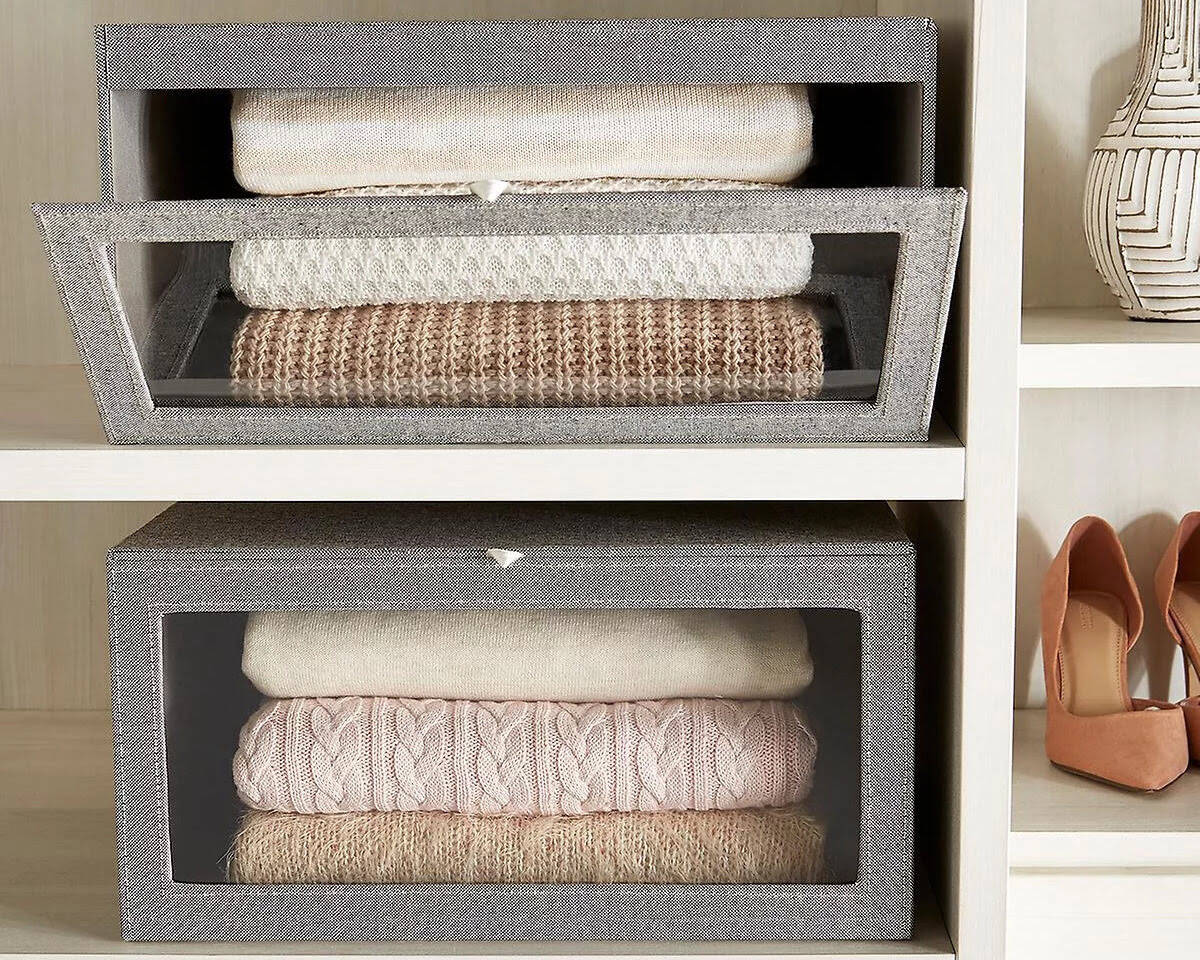

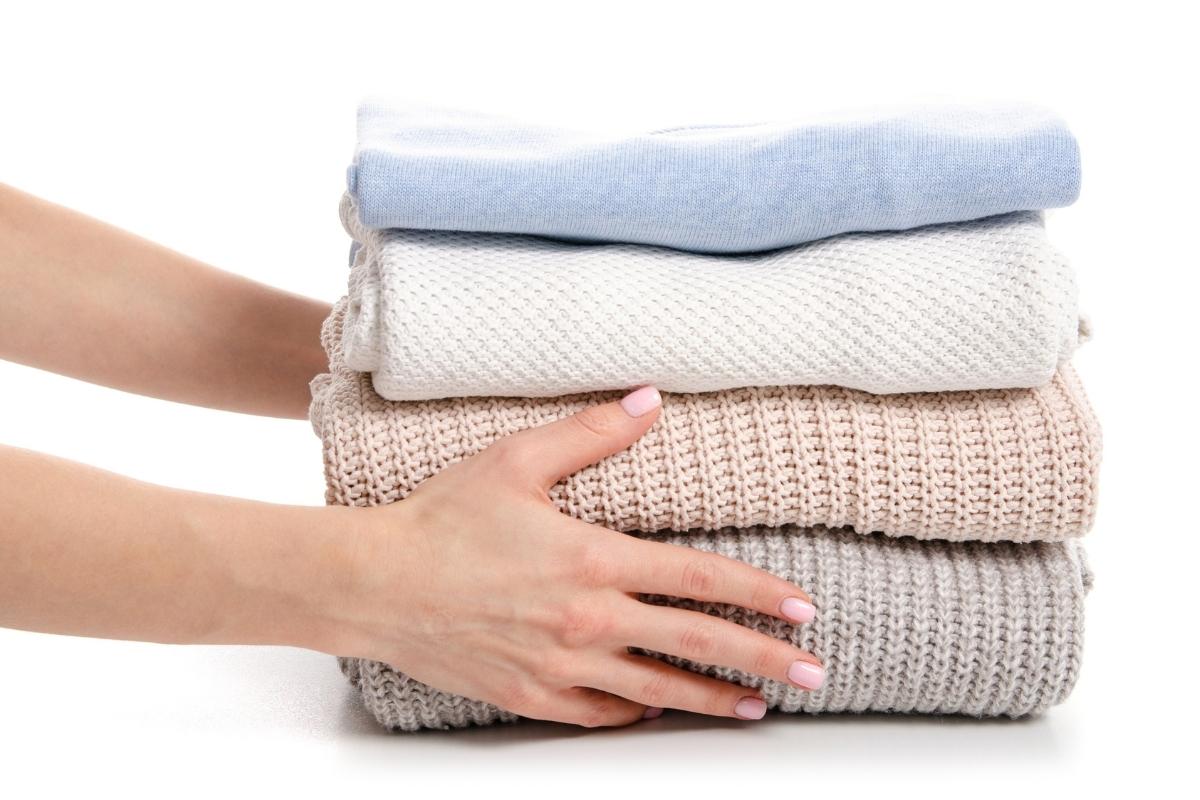

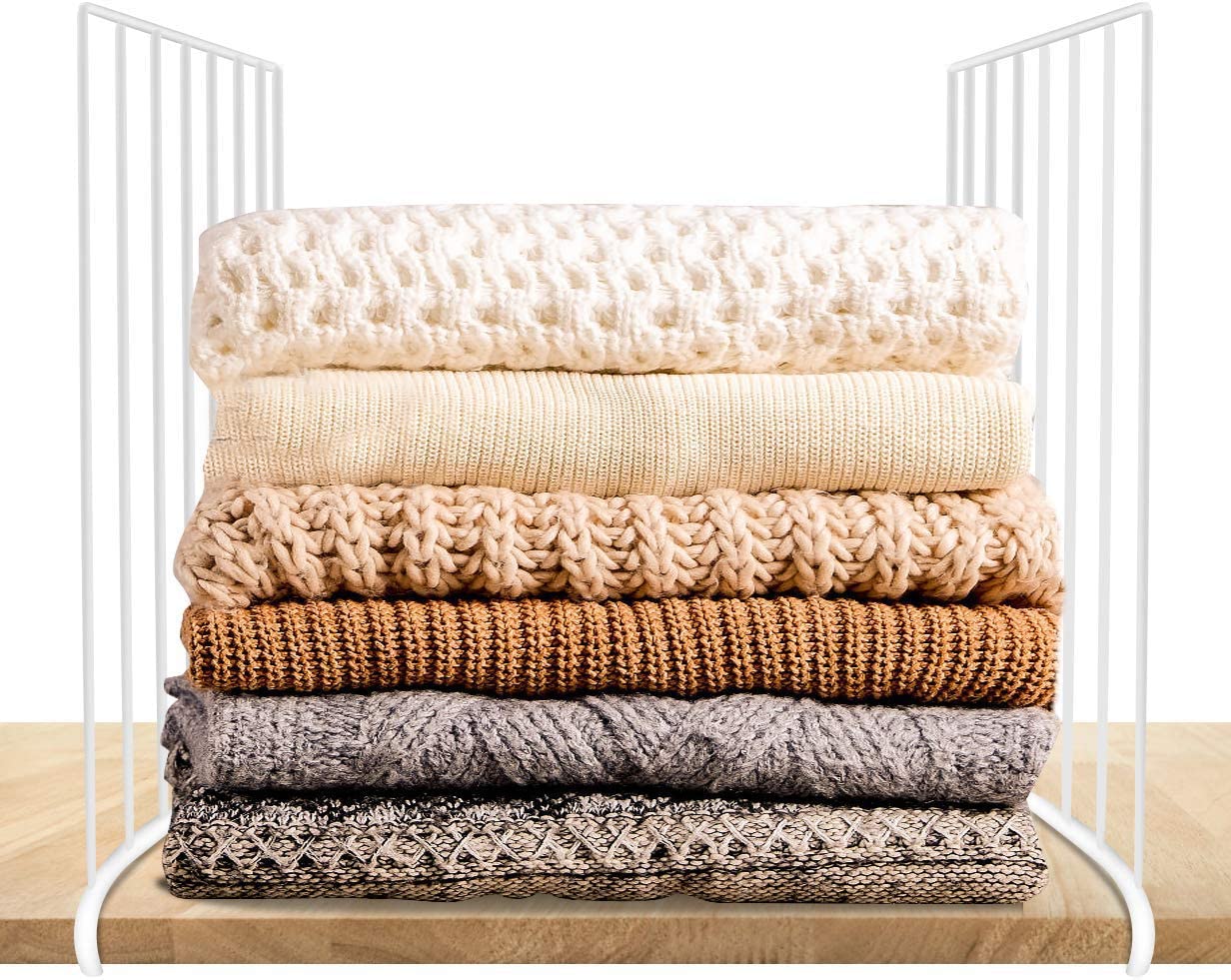
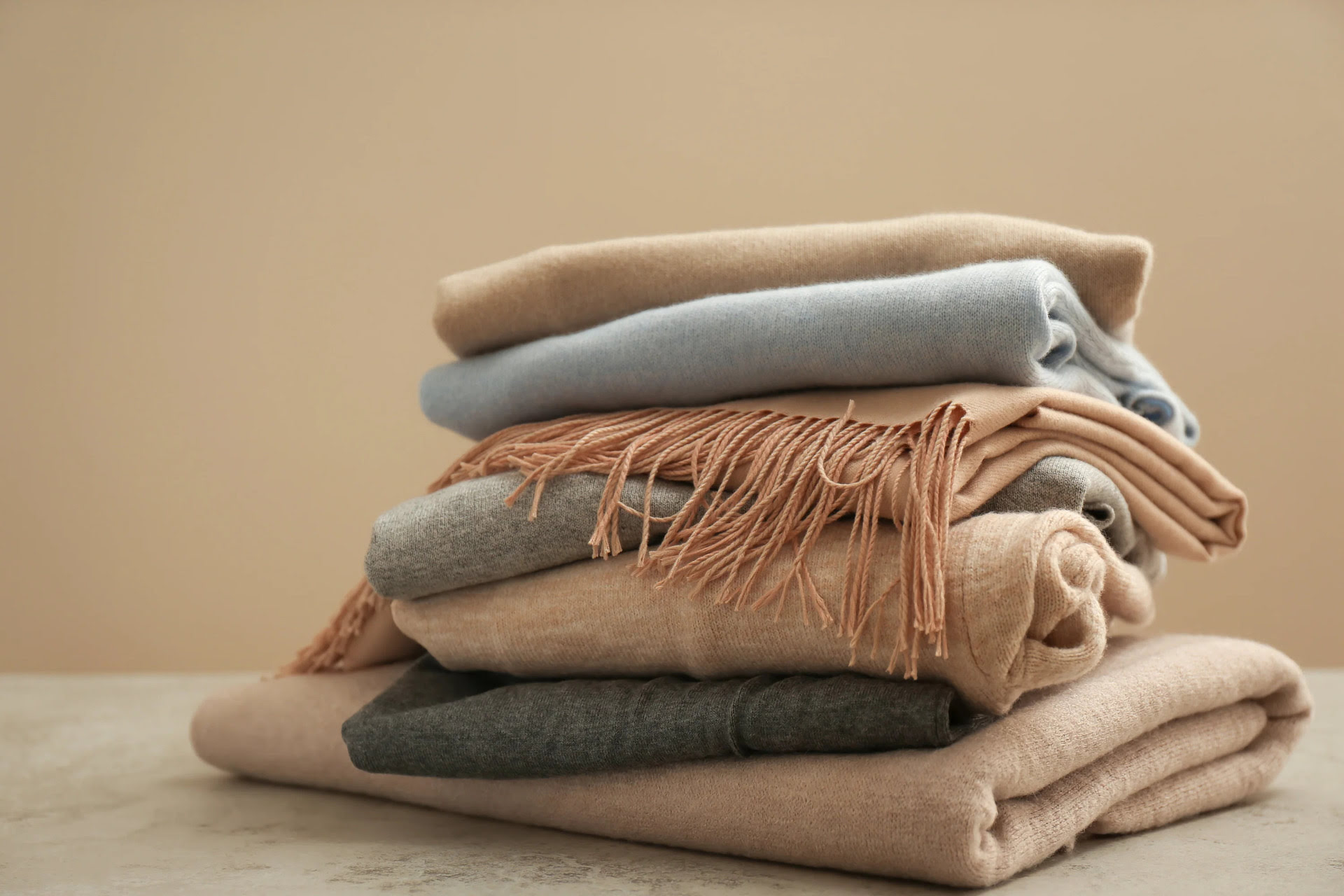

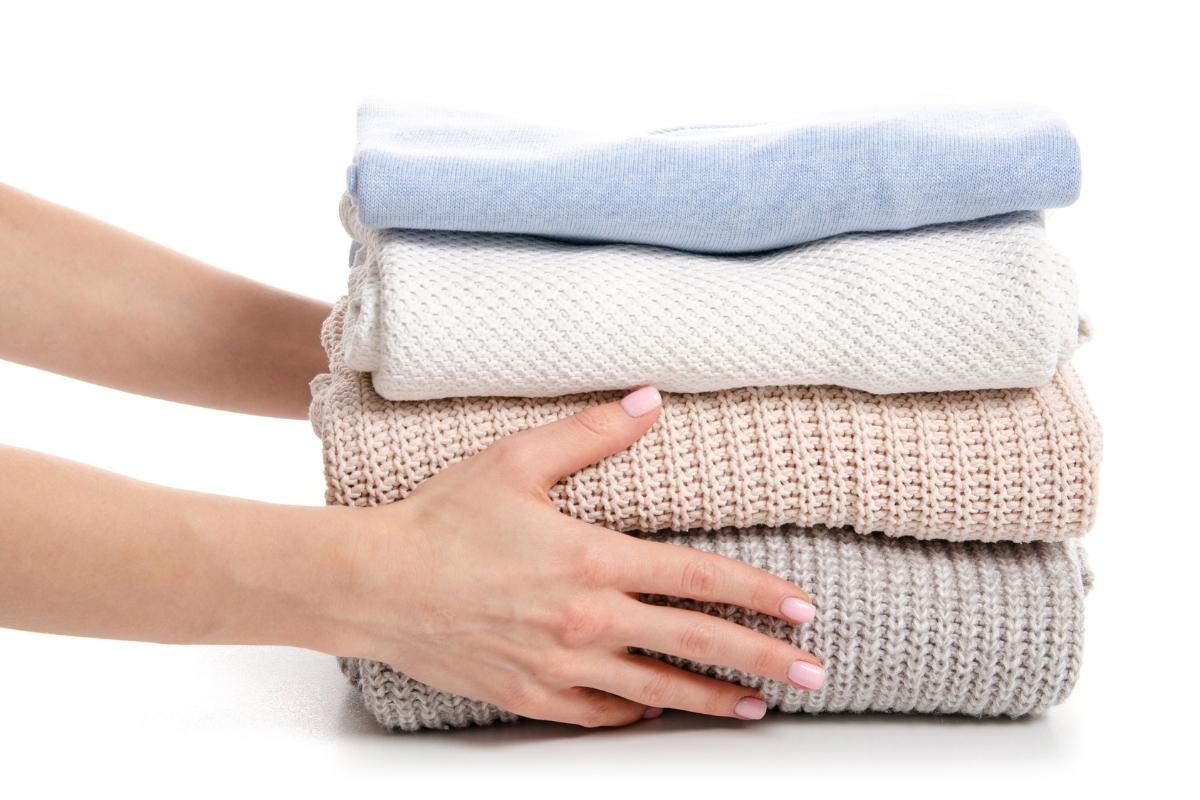
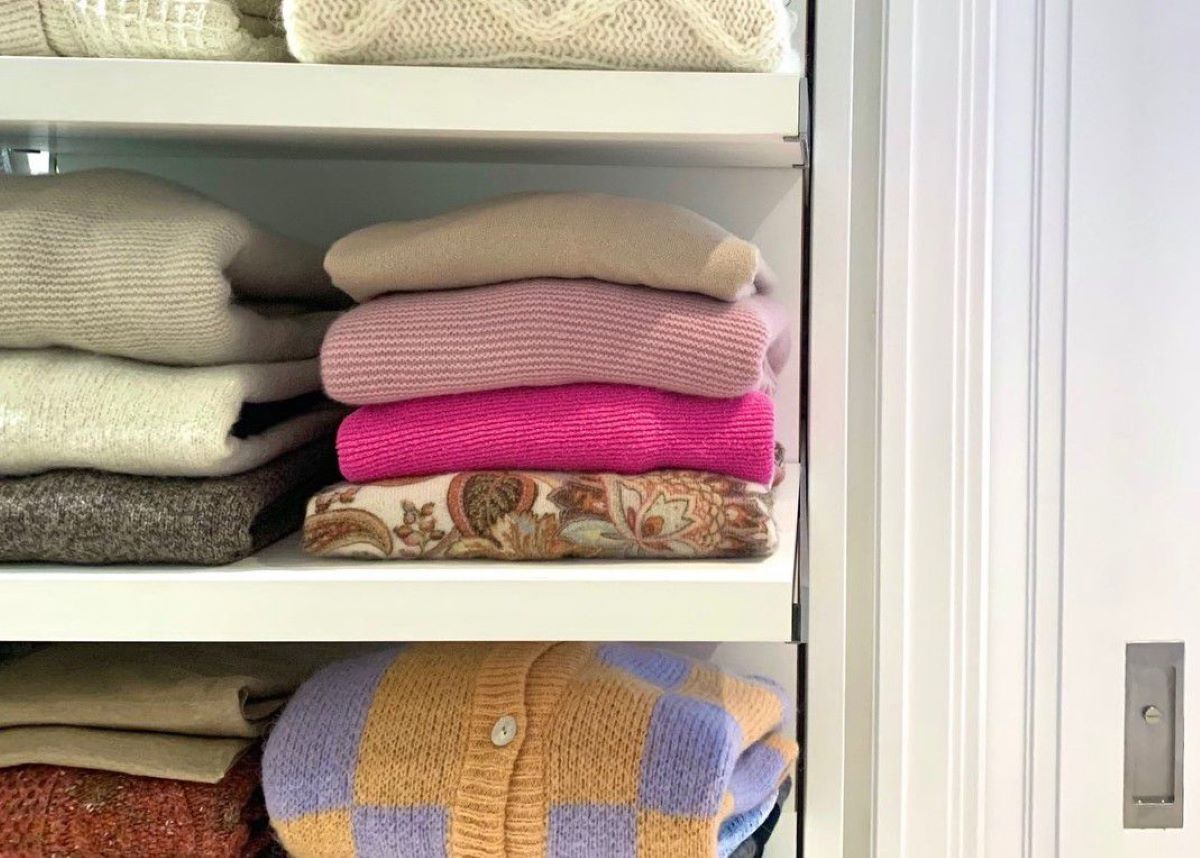
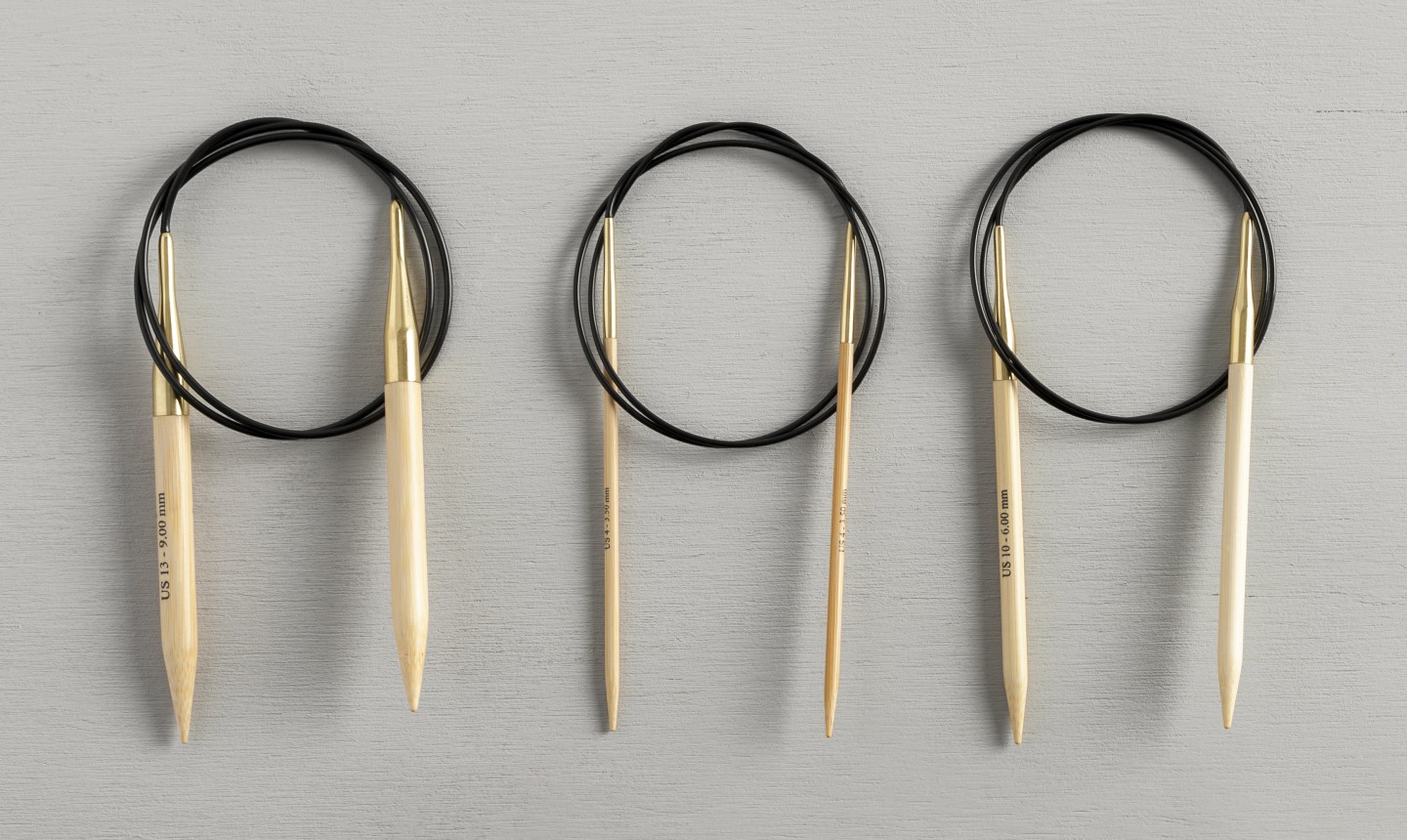
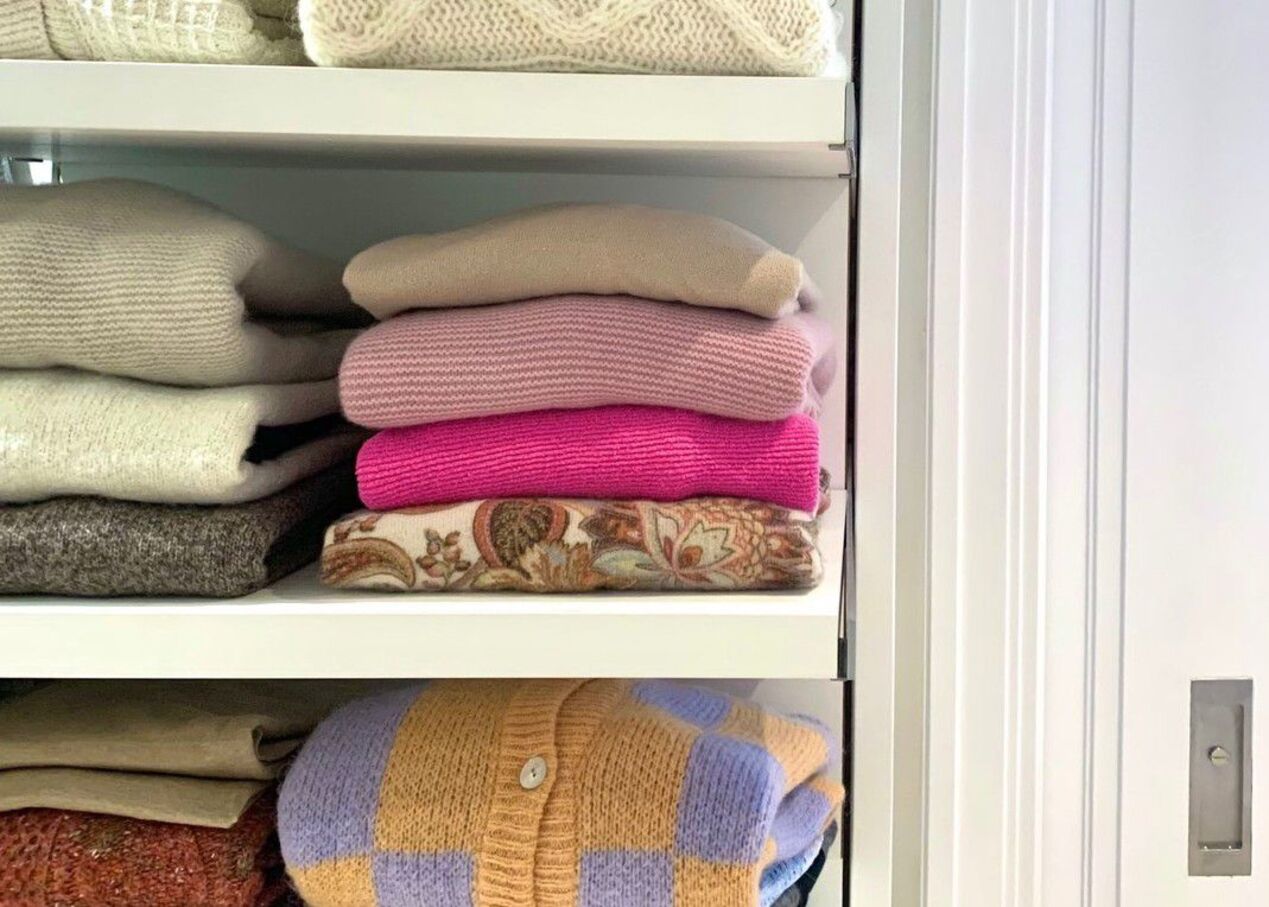
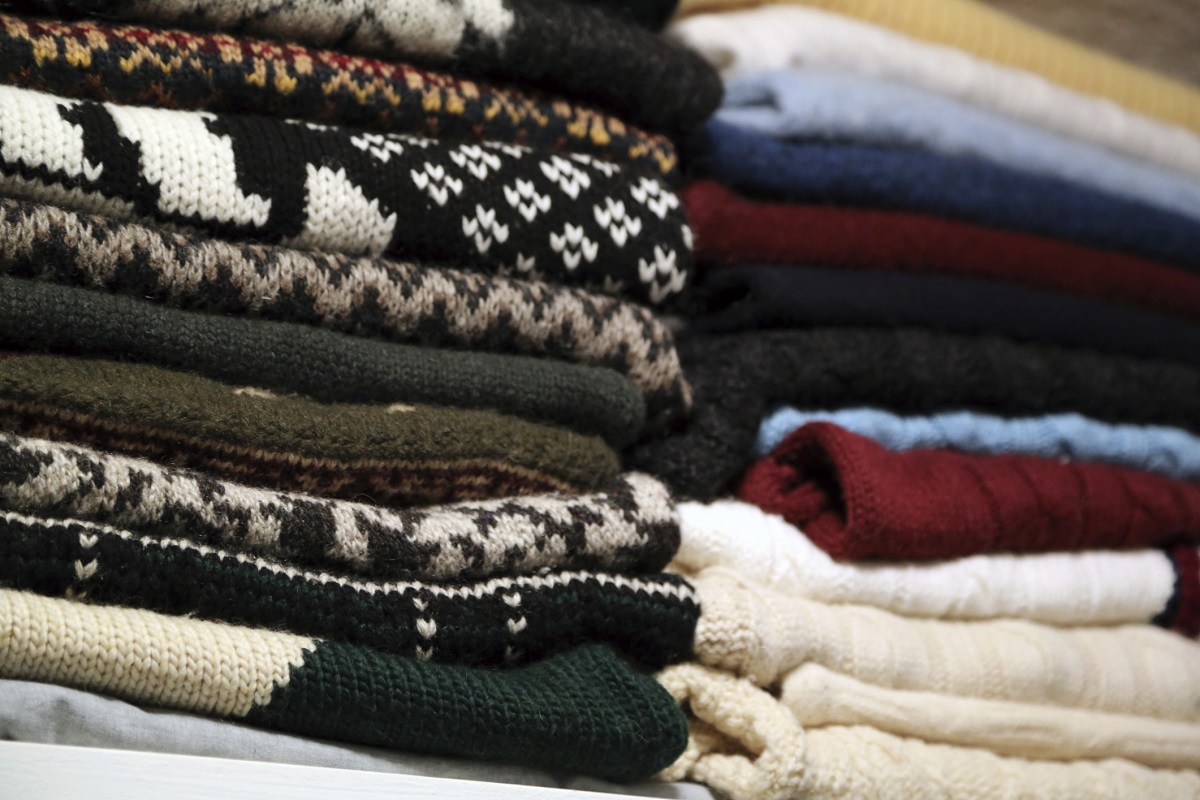
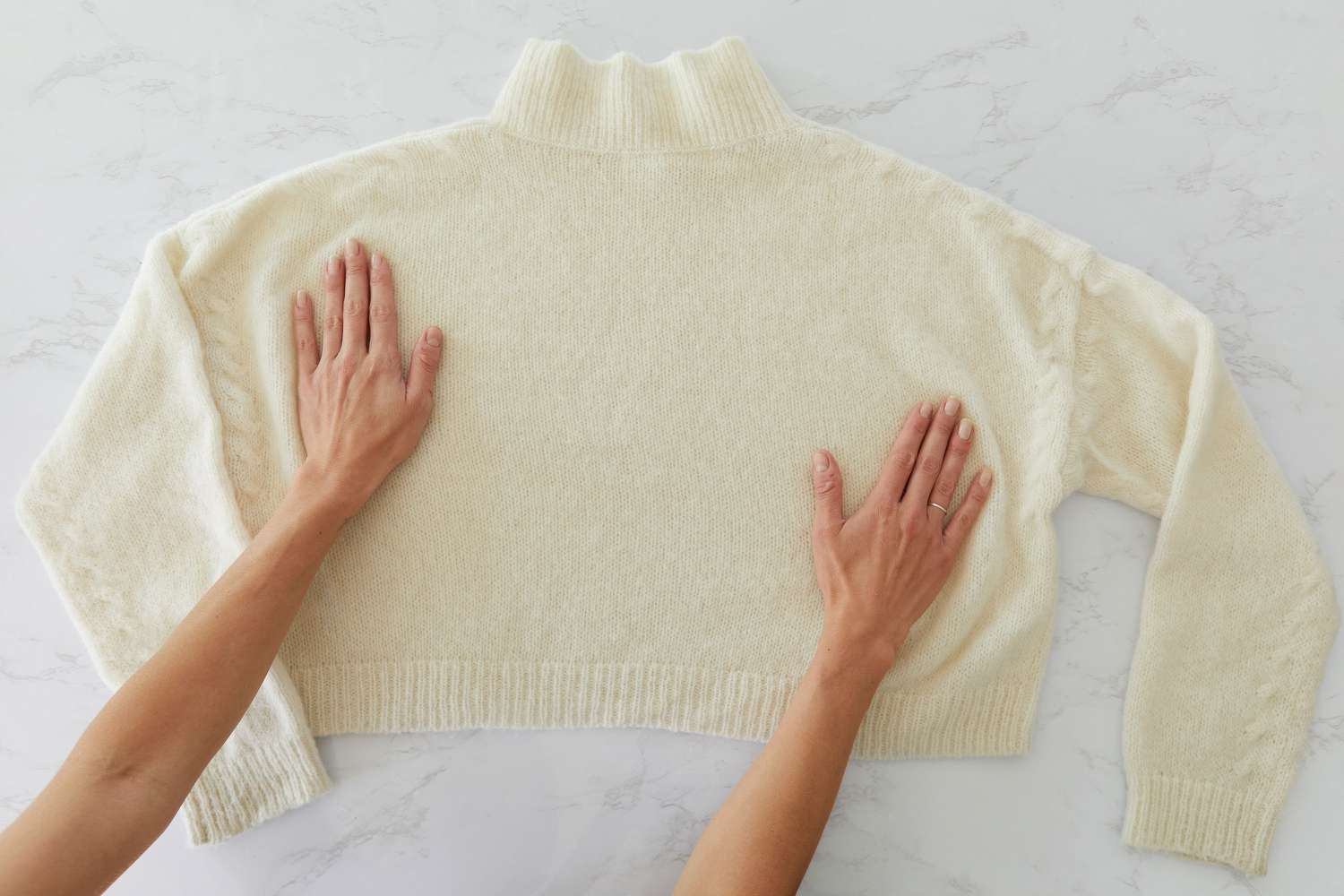
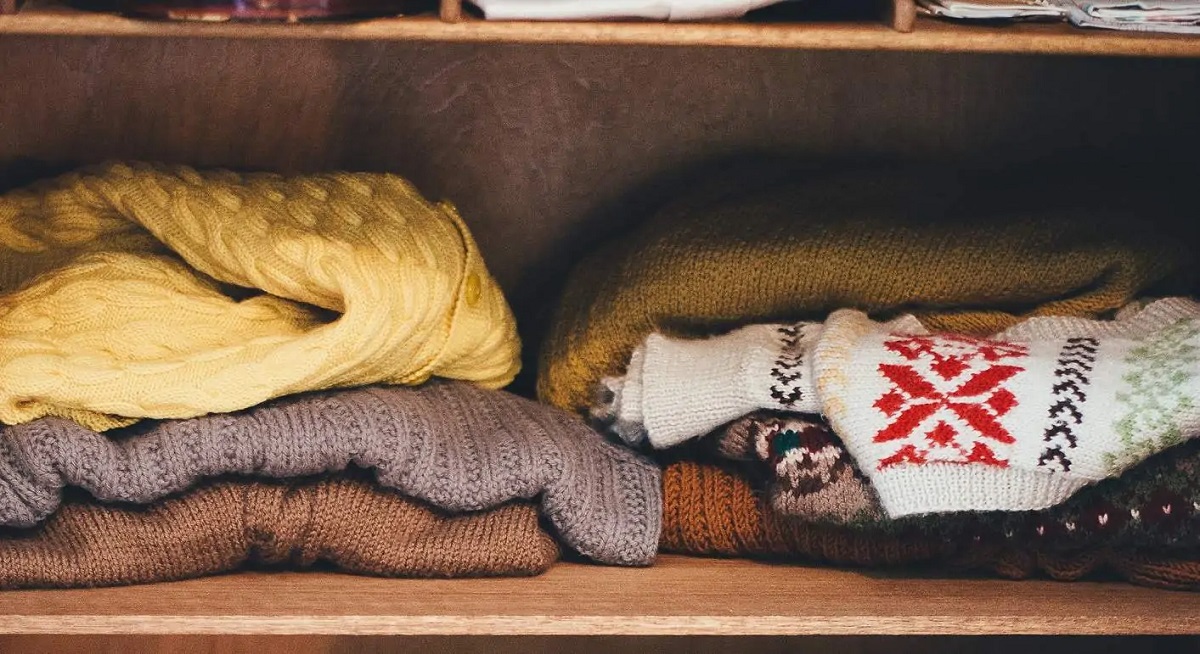

0 thoughts on “How To Store Knit Sweaters”